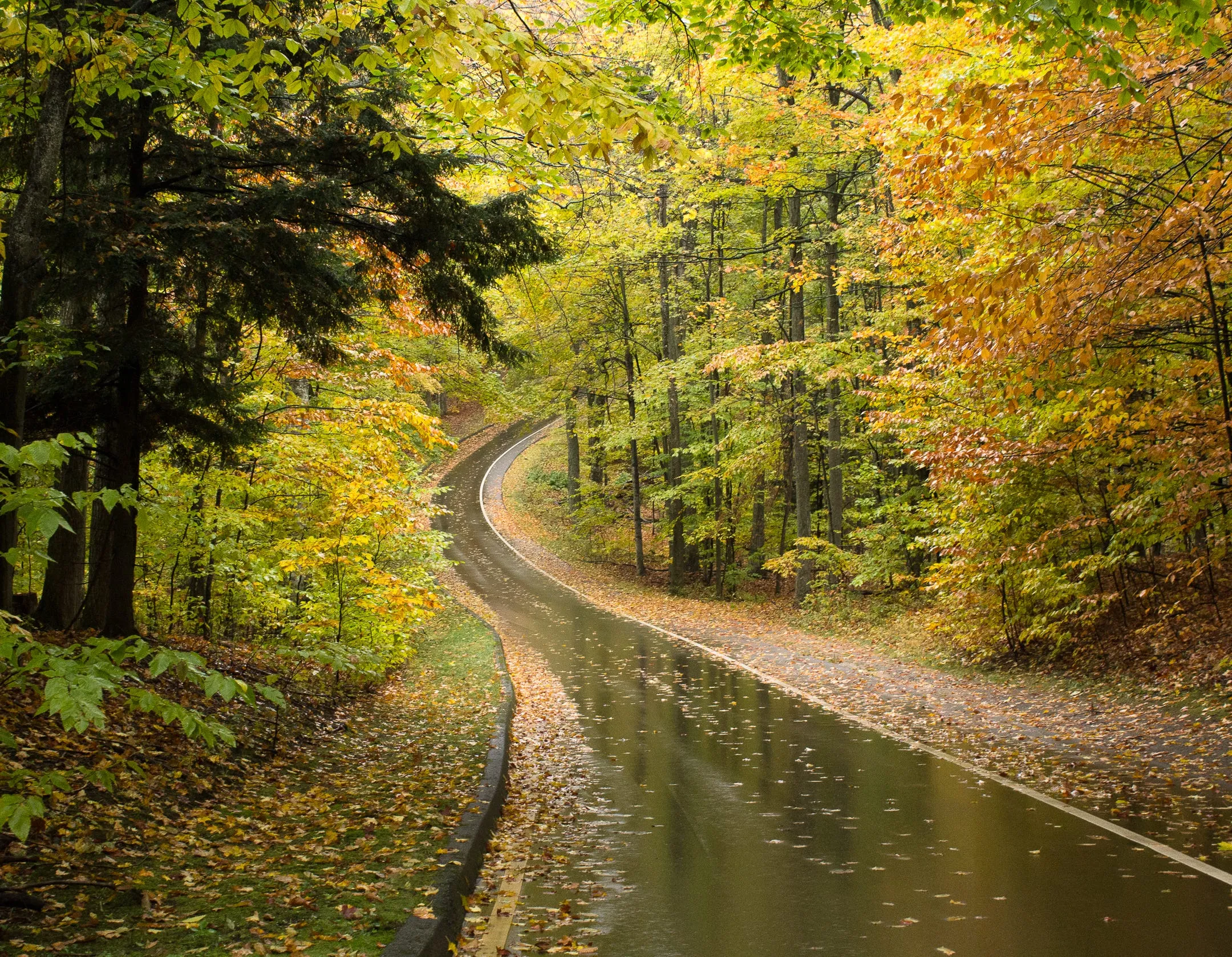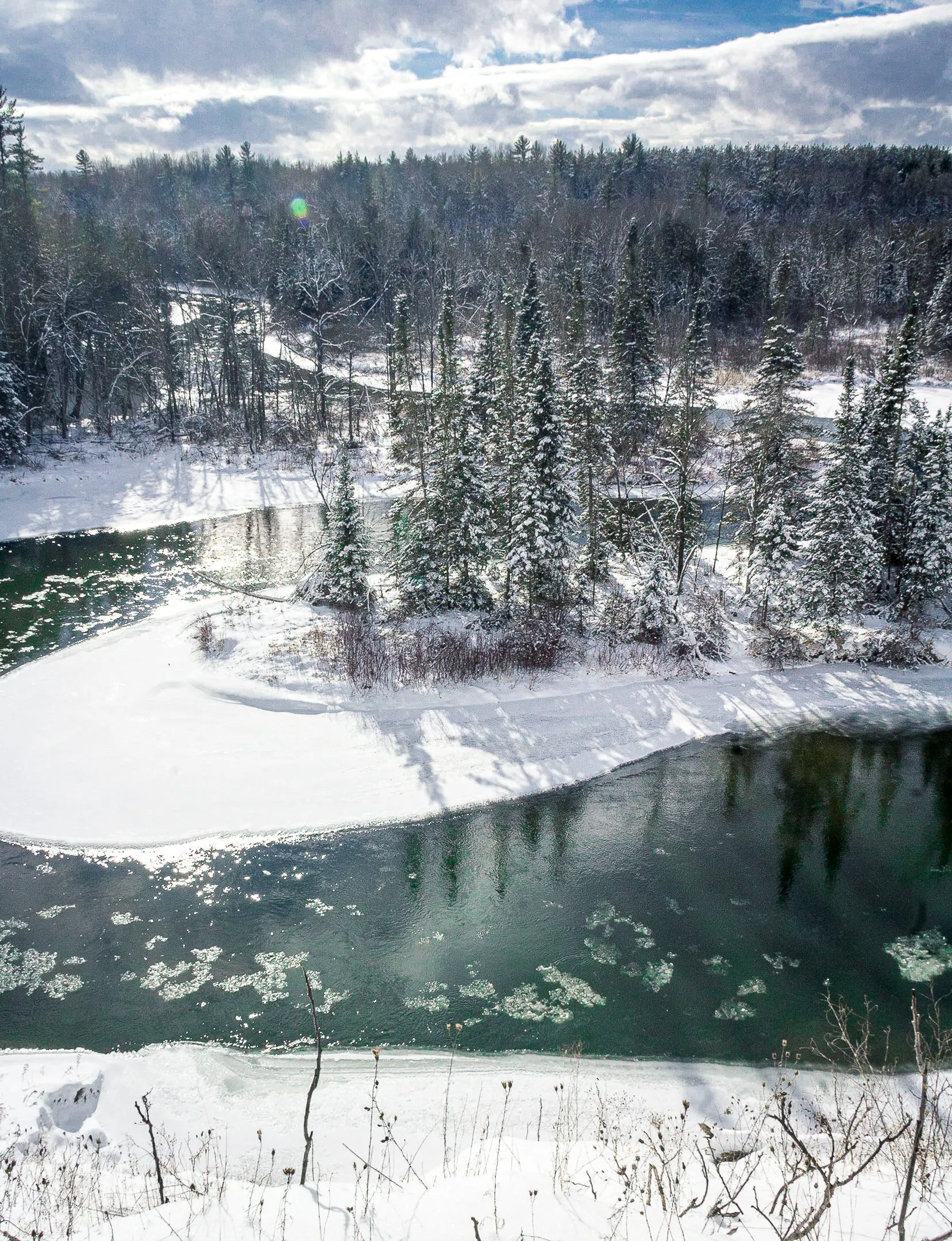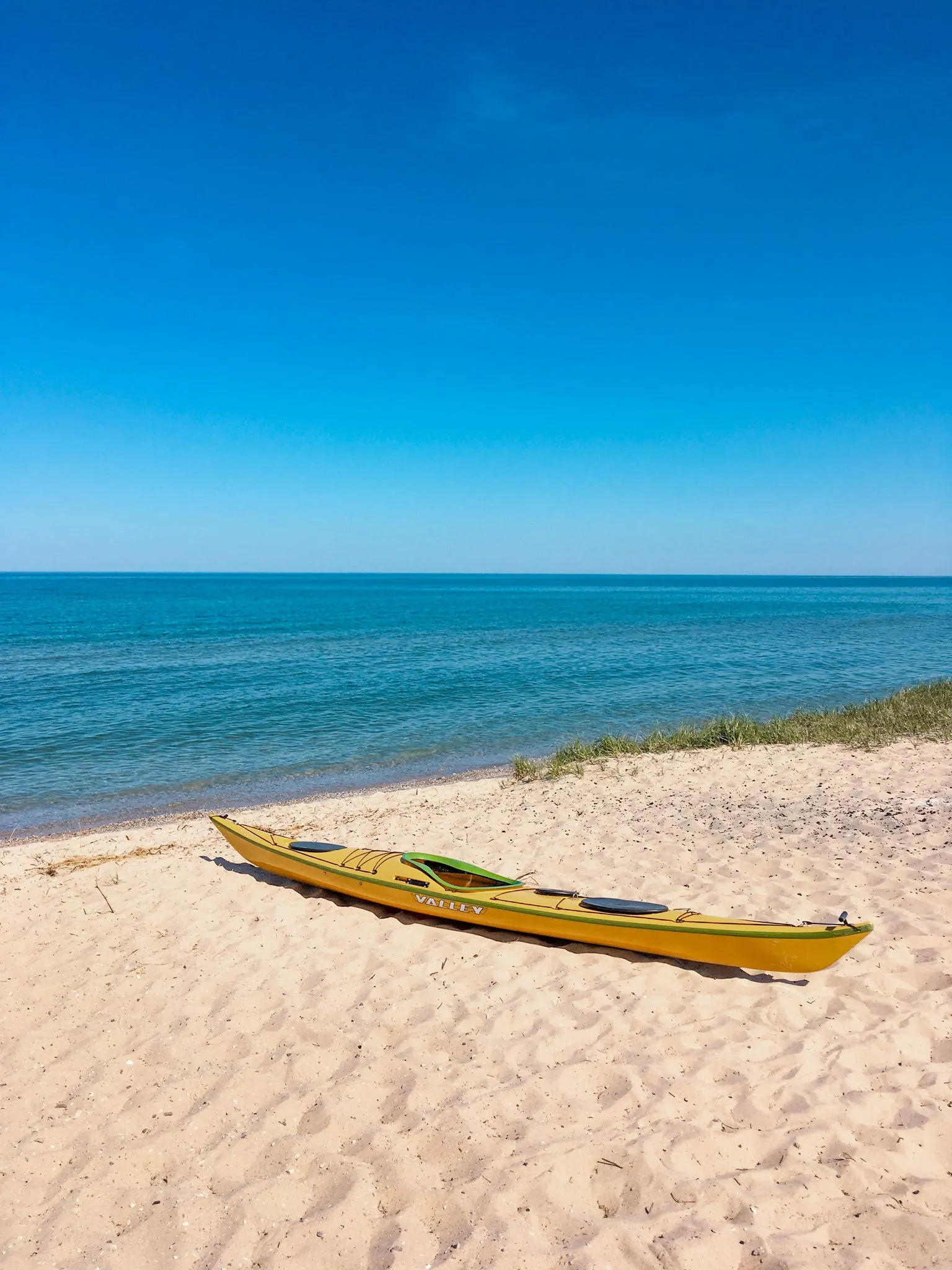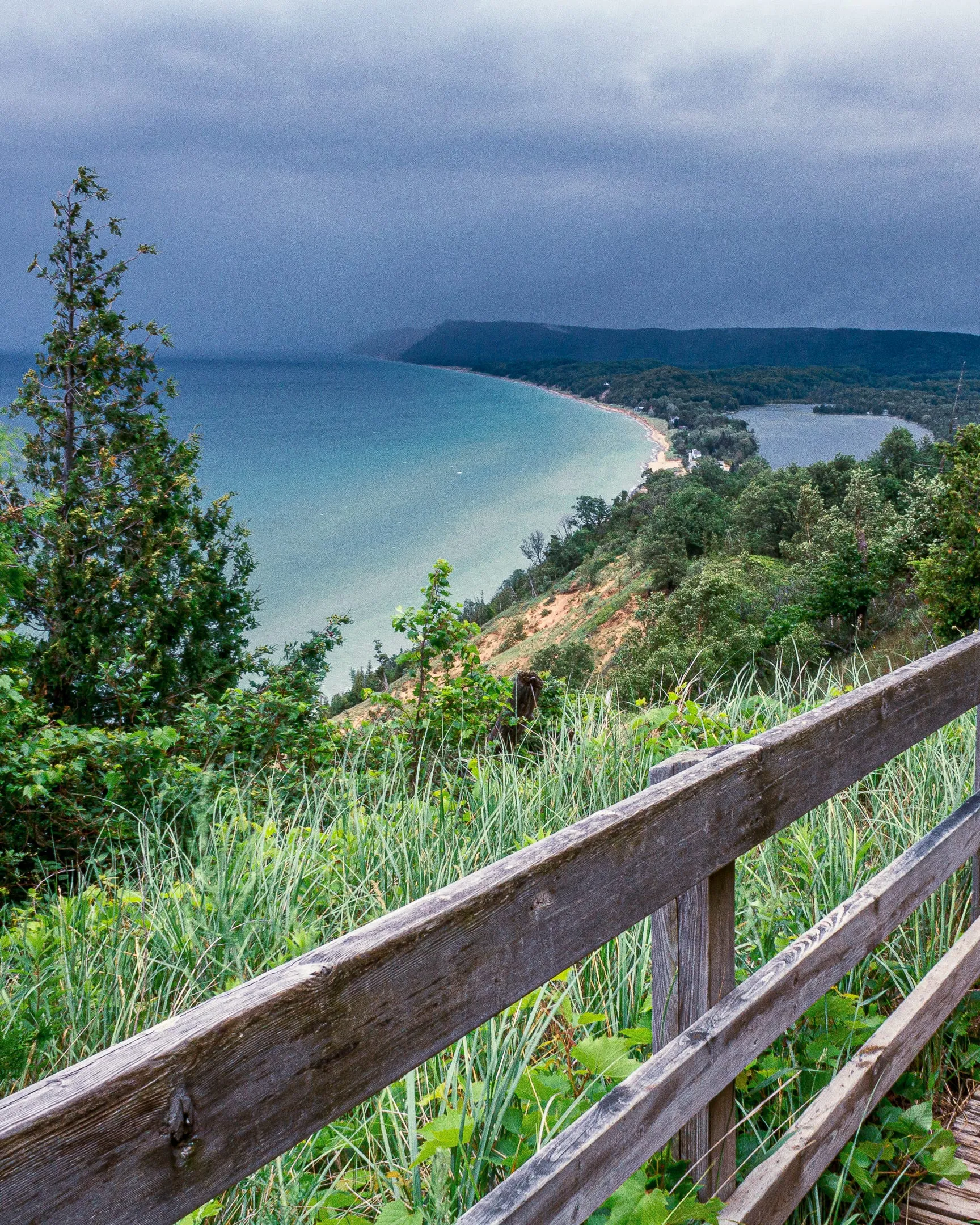Michigan’s Lower Peninsula, often overshadowed by the dramatic landscapes of the Upper Peninsula, holds a unique and subtle beauty that calls to those seeking adventure on foot. Far from being flat and featureless, this region offers a surprising variety of trails winding through dense forests, past sparkling inland lakes, along the shores of massive Lake Michigan, and even across rolling dunes.
For backpackers of all experience levels, exploring the Lower Peninsula wilderness provides a chance to connect with nature in a deeply personal way. Whether you’re looking for a challenging loop, a quiet escape, or a first-time overnight trip, backpacking in Michigan Lower Peninsula presents a wealth of opportunities. It’s a place where the path ahead reveals hidden gems – from quiet streams and towering pines to unexpected vistas that capture the spirit of the Great Lakes region.
Why Backpacking in Michigan’s Lower Peninsula is a Unique Experience
Backpacking in Michigan’s Lower Peninsula offers a distinct charm. Unlike mountainous regions, the elevation changes here are more gradual, making many trails accessible while still providing a good workout. The landscape is defined by its incredible freshwater resources – countless lakes, rivers, and the majestic Lake Michigan shoreline. Trails often follow these water features, offering stunning views and opportunities for a refreshing dip on a hot day.
The forests, predominantly hardwoods and pines, provide beautiful scenery throughout the year, transforming from lush green in summer to vibrant reds, oranges, and yellows in the fall. Winter snowshoeing or skiing can even turn familiar backpacking routes into entirely new, peaceful adventures. The accessibility of trailheads from major population centers makes it an ideal destination for weekend trips, allowing you to quickly trade city life for the tranquility of the woods.

Alt: Fall colors along a trail in Sleeping Bear Dunes, a great destination for backpacking in Michigan Lower Peninsula
Choosing to go best backpacking trails in michigan means embracing a landscape shaped by ancient glaciers, resulting in rolling terrain and scattered lakes. It’s a place where the subtle shifts in ecology from one type of forest to another, or the sudden appearance of a dune overlooking Lake Michigan, create memorable moments.
Top Trails for Backpacking in Michigan Lower Peninsula
While the Lower Peninsula boasts numerous trails, some stand out as prime destinations for overnight or multi-day backpacking trips. These routes offer diverse scenery, established campsites, and a true sense of getting away from it all.
The Manistee River Trail Loop
Located near Mesick, the Manistee River Trail is arguably the most popular destination for backpacking manistee river trail in the Lower Peninsula. This 23-mile loop combines the Manistee River Trail on the south side of the river with a section of the North Country Trail on the north side, connected by a striking suspension bridge. The trail offers beautiful views of the Manistee River below, particularly from overlooks perched along the bluffs. Features include numerous rustic campsites dotted along the route, small waterfalls, and diverse forest scenery.
Due to its accessibility and well-maintained path, the Manistee River Trail Loop is frequently chosen by first-time backpackers. This popularity means it can become very crowded, especially on weekends from spring through fall. Finding an open campsite can be challenging, and the atmosphere might be more lively than solitude seekers prefer. For a potentially quieter experience on the Manistee River, exploring sections for day hikes or considering other nearby trails within the vast backpacking in manistee national forest might be preferable for some.

Alt: Winter hiking trail along the Manistee River, a popular route for backpacking in Manistee National Forest
Sand Lakes Quiet Area
Located outside Traverse City, the Sand Lakes Quiet Area offers a different kind of backpacking experience. This area features sections of the North Country Trail winding through forests and past numerous small, sandy-bottomed lakes. While perhaps less dramatic than river overlooks or lake bluffs, the appeal here lies in the tranquility and the simple beauty of the woodland and lake ecosystems.
The Sand Lakes Quiet Area has a designated hike-in campsite, making it a viable option for beginner backpackers or those seeking a relatively short overnight trip. However, beware: the sandy lakes can lead to a significant mosquito population, particularly during peak summer. Visiting in the late summer or fall, well after the main bug season, is highly recommended for a more pleasant experience. It’s a great spot for a moderate hike, a refreshing swim in one of the lakes, and enjoying a peaceful night under the stars while backpacking in Michigan Lower Peninsula.
Backpacking on the Manitou Islands (Sleeping Bear Dunes National Lakeshore)
For a truly unique and remote backpacking adventure in the Lower Peninsula, the Manitou Islands in Sleeping Bear Dunes National Lakeshore are unparalleled. Accessing these islands requires a ferry ride from Leland, instantly transporting you to a different pace of life and a sense of historical isolation. Backpacking here offers a chance to explore old growth forests, historic settlements, ghost towns, and incredible Lake Michigan shoreline and dunes.
South Manitou Island is perhaps the more accessible of the two, featuring established rustic campgrounds and a network of hiking trails ranging from 1-4 miles between destinations. Highlights include exploring the historical farmsteads, climbing the lighthouse, visiting the unique grove of giant cedar trees, and viewing the shipwreck of the Francisco Morazan.
North Manitou Island offers a more rugged and remote experience. With 23 miles of trails and primarily dispersed backcountry camping, it caters to more experienced backpackers seeking solitude. Exploring North Manitou involves navigating through thicker forests, discovering hidden lakes, and wandering through the remnants of former island life. Both islands require permits and adherence to specific regulations regarding camping, fires (open fires are prohibited on North Manitou), and Leave No Trace principles. This is truly a premier, albeit slightly logistically complex, option for backpacking in Michigan Lower Peninsula.

Alt: Backpacker enjoying a snack on a white sand beach on South Manitou Island
Ludington State Park
Further south along the Lake Michigan coast, Ludington State Park offers a remarkable network of trails that, while perhaps best known for day hiking, also provide opportunities for overnight trips with a hike-in campground. The park features a diverse landscape, from boardwalks through wetlands and trails along inland lakes (Hamlin Lake, Lost Lake) to paths traversing dunes and leading out to the iconic Big Sable Point Lighthouse on Lake Michigan.
The park’s extensive trail system, including a loop of over 12 miles, allows for significant mileage accumulation, making it possible to piece together a challenging route suitable for a quick overnight or a strenuous day hike with camping at the park’s hike-in sites. It provides a fantastic blend of forest, dune, and lake views, making it a highly rewarding, albeit less remote than the Manitous, destination for backpacking in Michigan Lower Peninsula. Ludington is often considered one of the best places to visit in michigan for its combination of beach, hiking, and camping.
Planning Your Backpacking Trip in Michigan’s Lower Peninsula
Effective planning is key to a successful and enjoyable backpacking experience in the Lower Peninsula. Consider these factors before you hit the trail:
Best Time to Go Backpacking
- Spring (April-May): Trails can be wet and muddy from snowmelt. Bug season (mosquitoes and black flies) begins. Wildflowers emerge. Cooler temperatures are good for hiking, but be prepared for variable weather.
- Summer (June-August): Warmest temperatures, ideal for swimming in lakes and rivers. Peak bug season, especially in marshy areas. Trails are generally dry and well-defined. Can be crowded on popular routes, particularly on weekends.
- Fall (September-October): Often considered the prime season. Stunning fall foliage, cooler temperatures ideal for hiking, and significantly fewer bugs. Can be crowded on weekends during peak color. Be prepared for sudden weather changes.
- Winter (November-March): Requires specific gear (snowshoes, skis, layers). Trails are quiet and peaceful. Campsites will be rustic and cold. Provides a unique, challenging experience.
Permits and Regulations
Regulations vary depending on where you plan to backpack:
- State Parks (e.g., Ludington): Generally require a Recreation Passport for entry. Specific hike-in campsite reservations may be needed.
- National Lakeshores (e.g., Sleeping Bear Dunes – Manitou Islands): Require entrance fees and specific backcountry permits, often with designated campsites or zones. Regulations are strict to protect the sensitive environment. Research and obtain permits in advance, especially for popular times.
- National Forests (e.g., Manistee National Forest): Often allow dispersed camping (camping away from developed campgrounds) with certain rules (distance from water, roads, trails). Developed rustic campgrounds along trails may require fees or reservations. Check specific forest district rules.
- State Forests: Similar to National Forests, dispersed camping is often allowed.
Always research the specific rules for the area you plan to visit.
What to Pack
Standard backpacking gear applies (tent, sleeping bag, pad, stove, food, water filter/treatment). However, specific considerations for Michigan’s Lower Peninsula include:
- Bug Protection: Essential from late spring through summer. Pack strong insect repellent, consider permethrin treatment for clothing, and potentially a head net.
- Layers: Weather can change quickly, even in summer. Pack layers to adjust to temperature swings.
- Rain Gear: Be prepared for rain showers at any time of year.
- Navigation: Carry a map, compass, and/or GPS device. Trails are generally well-marked on popular routes, but it’s wise to be prepared, especially in less-trafficked areas.
- Water Shoes: Useful for river crossings (like some sections on the Manistee River Trail in higher water) or wading in lakes.
- Leave No Trace: Practice Leave No Trace principles rigorously to preserve the beauty of these areas. This includes proper disposal of waste (pack out everything), minimizing campfire impacts (where fires are allowed), and staying on designated trails.
Safety Tips
- Share Your Itinerary: Always tell someone where you are going and when you expect to return.
- Check Weather Forecasts: Be aware of potential storms or significant temperature changes.
- Water Sources: Know where water sources are along your route and filter or treat all water.
- Wildlife: While large dangerous animals are rare, be aware of black bears (though uncommon in the southern Lower Peninsula) and other wildlife. Store food properly.
- Trail Conditions: Conditions can vary greatly depending on the season and recent weather. Be prepared for mud, standing water, or snow/ice.
Beyond the Trails: Experiencing Michigan’s Culture and Nature
While backpacking is a primary focus, exploring the Lower Peninsula offers more than just trails. The region is dotted with charming small towns, often reflecting a strong connection to the Great Lakes and logging history. Local culture includes vibrant arts scenes, seasonal festivals, and, of course, delicious regional foods (think cherries, apples, pasties – though pasties are more Upper Peninsula, local variations exist). The experience of backpacking here is often intertwined with the broader natural beauty and community spirit of Michigan. After a few days on the trail, visiting a local brewery or cafe in a nearby town can be a perfect way to relax and refuel.

Alt: Hiking trail leading to an overlook, representative of trails for backpacking in Michigan Lower Peninsula
Frequently Asked Questions (FAQs) About Backpacking in Michigan Lower Peninsula
Q: What is the best time of year for backpacking in Michigan’s Lower Peninsula?
A: Fall (September-October) is widely considered the best time due to beautiful foliage, cooler temperatures, and fewer bugs. However, summer offers warmer weather ideal for swimming, and spring brings wildflowers, while winter provides a unique snowshoeing experience.
Q: Are permits required for backpacking?
A: Yes, requirements vary by location. National Lakeshores (like Sleeping Bear Dunes for the Manitou Islands) and some State Parks require permits or reservations for backcountry camping. Dispersed camping in National and State Forests often requires adherence to specific rules but may not require a formal permit registration, though checking local regulations is crucial.
Q: Are there bears or dangerous wildlife in the Lower Peninsula?
A: Black bears are present in parts of the Lower Peninsula, especially in northern forested areas like the Manistee National Forest, but encounters are not common. Practice proper food storage techniques (bear canisters or hanging food) in bear country. Other wildlife includes deer, coyotes, various birds, and rodents.
Q: How challenging are the trails?
A: Trail difficulty varies. Many trails in the Lower Peninsula have rolling hills rather than steep climbs, making them accessible for various fitness levels. Routes like the Manistee River Trail Loop are considered moderate. The remoteness and longer distances on North Manitou Island present a greater challenge.
Q: Is dispersed camping allowed?
A: Dispersed camping is generally allowed in Michigan’s State and National Forests, provided you follow specific rules (e.g., camping a certain distance from trails, roads, and water sources; packing out all waste). It is typically not allowed in State Parks or National Lakeshores outside of designated areas or with specific permits. Always verify regulations for your chosen area.
Conclusion
Backpacking in Michigan’s Lower Peninsula offers a rewarding escape into diverse natural landscapes. From the popular loops like the Manistee River Trail to the remote shores of the Manitou Islands and the quiet beauty of the Sand Lakes, there’s a trail for every level of backpacker. Planning appropriately for the season, understanding permit requirements, and practicing Leave No Trace principles will ensure a safe and memorable trip. Embrace the subtle wonders of this region – the way light filters through the pines, the expansive views of Lake Michigan, the quiet sounds of the forest – and discover the unique joy of backpacking in Michigan Lower Peninsula.
